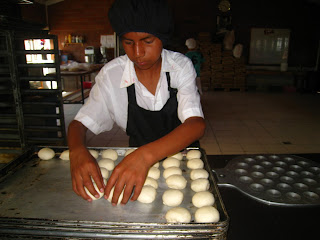A closer look into Parramos.
The streets of Parramos. The walk from NPH to the Central Park in Parramos is about 10-15 minutes.
The Central Park. We walk through the Central Park to get to NPH or the buses but sometimes we bring our kids to the park to play.
The local stores. Most of the families that own the stores live upstairs or behind the shop. You will see bars on every store front for protection from robbers.
Prices:
Box of milk, 8 Q
Bottle of water, 2.5-3 Q
Bag of chips, .50-1 Q
1 liter of coke, 15 Q
Egg, 1 Q
Beer, 6 Q
There are also a lot of people who have little stands outside of their houses. Sometimes they sell pre-made food or hand made tortillas.
The market. This is where we go to buy all of our veggies and fruits.
Prices:
Carrot, 1 Q
Pound of potatoes, 2.5 Q
A bunch of bananas, 5-7 Q
Pound of strawberries, 4 Q
Mango, 1 Q
Onion, .50 Q

























